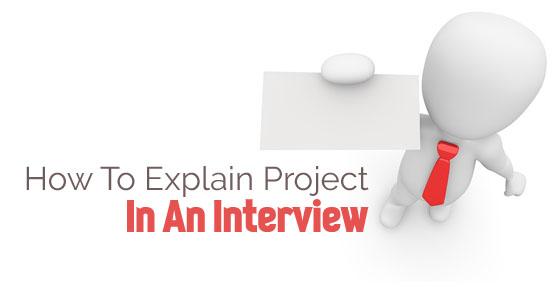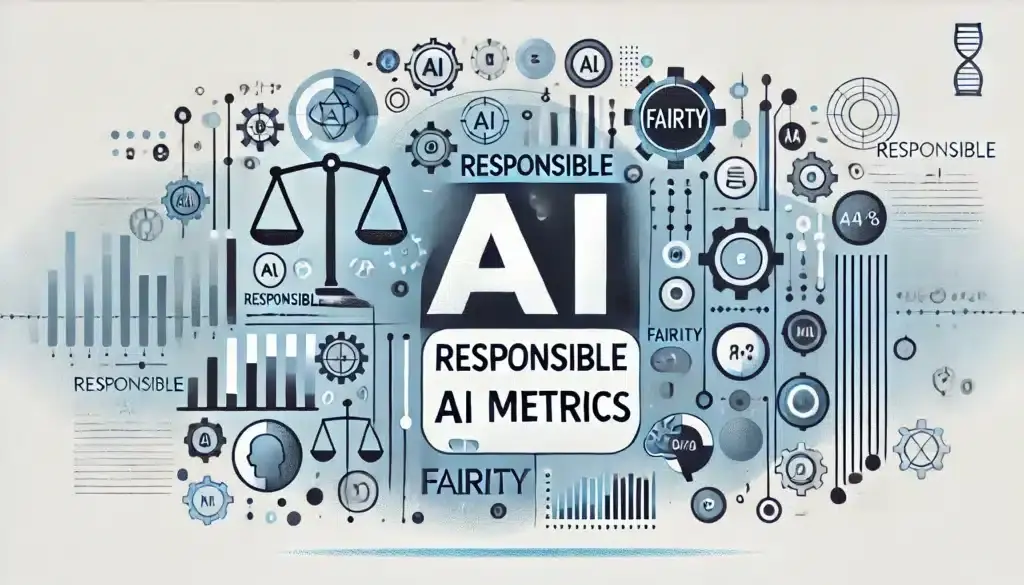Section 1 - Why Cloud ML Infrastructure Questions Are Rising in 2025 Interviews
Walk into any senior ML, data platform, or MLOps interview today, and chances are you’ll face at least one of these:
“Design a scalable ML pipeline for real-time predictions.”
“Between AWS SageMaker, GCP Vertex AI, and Azure ML — which one would you use, and why?”
“How would you orchestrate retraining and monitoring for a model deployed in production?”
If that sounds familiar, it’s because cloud ML infrastructure has quietly become the new system design interview for machine learning engineers.
In 2025, ML interviews are no longer about how well you tune a model — they’re about how well you operationalize it.
That shift has been driven by three major trends shaping how companies hire and build ML systems.
a. From Models to Systems
Five years ago, ML interviews focused heavily on algorithms — gradient descent, feature engineering, or hyperparameter tuning.
Today, those are table stakes.
The frontier has moved to production-level intelligence — building systems that can train, deploy, and self-monitor models efficiently across distributed infrastructure.
Modern interviewers aren’t looking for someone who can train a ResNet — they’re looking for someone who knows how to run 50 of them across GPUs, automate retraining, and log metrics at scale.
That’s why interview prompts now sound like:
“How would you deploy an ML model that scales dynamically based on request load?”
“How would you design a monitoring pipeline for data drift in GCP?”
They test architecture reasoning, not memorization.
“At FAANG and top AI startups, model accuracy is no longer a differentiator — model reliability is.”
And reliability depends on infrastructure.
Check out Interview Node’s guide “Mastering ML System Design: Key Concepts for Cracking Top Tech Interviews”
b. The Multi-Cloud Era
In 2025, no company is purely on one cloud.
Even if the backbone runs on AWS, data teams might use GCP’s BigQuery or Azure’s compliance features for regulated workloads.
This reality has made interviews increasingly cross-cloud.
Interviewers expect candidates to know:
- How ML pipelines differ across clouds
- What trade-offs each platform introduces
- When managed services are worth using — and when to go custom
For example, GCP’s Vertex AI integrates cleanly with BigQuery and Dataflow — making it perfect for quick experimentation.
AWS’s SageMaker, on the other hand, offers granular control over containerization, distributed training, and cost optimization through spot instances.
Meanwhile, Azure ML is the go-to in enterprise settings requiring security audits, access control, and compliance documentation.
When an interviewer asks,
“If your company uses GCP for data and AWS for deployment, how would you design your ML pipeline?”
they’re not testing tool familiarity — they’re testing whether you can architect interoperable systems.
“Knowing a single cloud makes you an engineer. Knowing how to bridge them makes you a systems thinker.”
c. MLOps Is the New DevOps
As ML pipelines mature, MLOps — the discipline of operationalizing machine learning — has become the new skill threshold for senior roles.
Recruiters and hiring managers no longer ask:
“Can you build an ML model?”
They now ask:
“Can you make sure it doesn’t break once deployed?”
MLOps roles require blending cloud engineering, data pipelines, and automation:
- Versioning data and models
- Managing CI/CD for ML artifacts
- Automating retraining workflows
- Handling GPU utilization and scaling
- Monitoring models in production
Cloud ML infrastructure knowledge underpins every one of these tasks.
This is why interviewers from companies like Amazon, Uber, and Stripe ask open-ended system questions such as:
“How would you manage model retraining on AWS for streaming data?”
“How would you implement feature stores on GCP for real-time recommendations?”
Each of these questions hides an expectation: that you understand cloud-managed orchestration tools and trade-offs in automation.
d. The Skill Signal: Architecture Reasoning
When a hiring manager evaluates a senior ML engineer, they look for reasoning under constraints — cost, latency, and governance.
Cloud questions are the perfect lens for this.
They expose whether a candidate:
- Thinks about cost-efficiency (e.g., using AWS spot instances vs. GCP preemptible VMs)
- Designs for scalability (e.g., distributed training, auto-scaling clusters)
- Considers maintainability (e.g., reproducibility, data lineage, model versioning)
A strong answer connects all three.
For example:
“On AWS, I’d use SageMaker for distributed training with spot instances to optimize cost, log all metrics to CloudWatch for reproducibility, and use Step Functions to orchestrate retraining workflows triggered by drift alerts.”
That single sentence communicates:
- Cost awareness
- Workflow automation
- Reliability mindset
That’s exactly what senior interviewers are listening for — not the tools, but the thinking.
“In 2025, ML infrastructure knowledge isn’t a bonus — it’s the backbone of credibility in interviews.”
e. The Takeaway: Cloud ML Interviews Test Systems Thinking
If you’re preparing for ML interviews at FAANG, OpenAI, or any high-scale AI company, you don’t need to memorize every SDK.
You need to master how to reason about architecture trade-offs.
Here’s what strong answers sound like:
- “I’d use GCP for managed orchestration — it reduces DevOps overhead.”
- “AWS offers more fine-grained control — ideal for complex multi-container training.”
- “Azure’s ML registry and governance tools are unmatched in regulated industries.”
Each answer doesn’t show brand loyalty — it shows situational awareness.
That’s what makes you sound like a decision-maker, not just a doer.
“Cloud ML infrastructure questions aren’t about the cloud — they’re about how you think.”
Check out Interview Node’s guide “Scalable ML Systems for Senior Engineers – InterviewNode”
Section 2 - AWS for Machine Learning: Power, Control, and Customization
If Google Cloud is known for simplicity and Azure for compliance, AWS is known for power and control.
It’s the backbone of enterprise ML — powering workloads from Amazon’s own recommendation systems to Netflix’s personalization engines and Tesla’s sensor analytics.
Interviewers love to test AWS because it forces candidates to balance customization, cost control, and automation — three things that mirror real-world engineering trade-offs.
Let’s break down how to discuss AWS ML infrastructure like an expert — one who doesn’t just name services but explains why and how they fit together.
a. AWS’s Core ML Philosophy: Full Control, Infinite Flexibility
AWS doesn’t abstract much by default — and that’s by design.
It’s built for teams that need to customize every part of their ML lifecycle — from GPU provisioning to container orchestration and distributed training.
Unlike GCP’s “managed-first” approach, AWS gives you complete ownership of your ML stack:
- You can control how models are trained, deployed, versioned, and scaled.
- You can mix managed tools like SageMaker with raw compute (EC2, ECS, EKS) for full flexibility.
- You can build hybrid ML pipelines — connecting on-premise data lakes with AWS training clusters.
That’s why AWS dominates in enterprise and FAANG-level ML teams where custom infrastructure and compliance constraints matter as much as innovation.
“AWS is the choice when you need to architect the ML system — not just use it.”
b. The AWS ML Ecosystem: Building Blocks Every Candidate Should Know
When interviewers say “design an ML pipeline on AWS,” they expect you to reason across five key components:
Data Storage and Ingestion
- Amazon S3: The foundation. Every dataset, model artifact, and log file lives here.
- AWS Glue / Data Wrangler: ETL and feature preparation tools.
- Redshift / Athena: Query and analytics layers for pre-model processing.
Interview-ready phrasing:
“I’d store raw and processed data in S3 with versioning enabled, use Glue for transformation, and maintain metadata lineage through AWS Lake Formation.”
That one line shows operational literacy — you understand traceability, not just storage.
Model Training
- Amazon SageMaker: The centerpiece — orchestrates data prep, training, tuning, and deployment.
- EC2 or EKS: For custom or containerized training setups.
- FSx for Lustre: For high-performance I/O during distributed training.
Example answer:
“I’d use SageMaker for distributed training across GPU clusters, store checkpoints in S3, and use managed spot training to optimize costs.”
Bonus: Mentioning cost optimization (spot vs on-demand) shows maturity.
Model Deployment and Serving
- SageMaker Endpoints: Real-time inference with auto-scaling.
- Lambda Functions: Lightweight inference for simple models.
- ECS / EKS: For microservice-based or custom-serving architectures.
“For low-latency workloads, I’d deploy via SageMaker Endpoints with auto-scaling policies based on CloudWatch metrics; for batch inference, I’d use Step Functions + ECS jobs.”
This answer connects technical performance with operational cost-efficiency — a senior-level signal.
Monitoring and Automation
- CloudWatch: Logs, metrics, and alerts.
- Step Functions: Workflow orchestration for retraining and evaluation.
- EventBridge: Trigger-based automation (e.g., drift → retrain).
“I’d automate retraining via Step Functions triggered by CloudWatch metrics when performance or drift thresholds are crossed.”
Interviewers love this because it turns static infrastructure into a self-healing ML pipeline.
Security and Governance
- IAM Roles and Policies: Fine-grained access control.
- KMS: Encryption for data and models.
- CloudTrail: Audit logging for compliance.
Enterprise-level phrasing:
“I’d isolate roles for data scientists and training services, use KMS for encryption, and log all model API access through CloudTrail to meet compliance standards.”
That one answer demonstrates both technical design and governance awareness — rare in interviews but highly valued.
c. Sample AWS Interview Scenarios (and Winning Answers)
Let’s look at how these concepts translate to real questions.
Q1. “Design an ML Training System on AWS for a Team That Retrains Models Weekly.”
✅ Strong Answer:
“I’d use S3 for data storage and SageMaker Pipelines to automate retraining workflows.
Each pipeline run would pull fresh data from Glue, train using distributed EC2 GPU instances, log metrics in CloudWatch, and deploy updated models through SageMaker Endpoints.
Versioning would be handled by SageMaker Model Registry, with rollback support for the previous stable version.”
This demonstrates full lifecycle thinking — from data to rollback.
Q2. “How Would You Optimize ML Training Cost on AWS?”
✅ Strong Answer:
“I’d leverage managed spot training for SageMaker jobs and store checkpoints periodically so interrupted sessions can resume.
For larger models, I’d use FSx for Lustre to accelerate I/O and CloudWatch metrics to track GPU utilization — ensuring efficient scaling.”
That answer shows awareness of both technical optimization and cloud economics.
Q3. “What Are the Trade-Offs of Using SageMaker vs Custom Kubernetes (EKS)?”
✅ Strong Answer:
“SageMaker accelerates development with managed orchestration and model registry but abstracts infrastructure control.
If I need fine-grained resource tuning, hybrid deployment, or integration with existing microservices, I’d go with EKS.
Essentially: SageMaker saves time; EKS gives flexibility.”
This shows you can compare, not just recall — a key differentiator in interviews.
Check out Interview Node’s guide “End-to-End ML Project Walkthrough: A Framework for Interview Success”
d. What Interviewers Look for When You Talk AWS
When candidates talk about AWS in interviews, interviewers listen for four mental models:
- Pipeline understanding — data → training → serving → monitoring
- Trade-off reasoning — managed simplicity vs custom flexibility
- Cost and scaling awareness — spot instances, batch jobs, auto-scaling
- Governance mindset — roles, audit logs, and reproducibility
Most engineers mention “SageMaker.”
Few explain how to automate retraining with Step Functions or how to design for cost resilience.
That’s what separates a good candidate from a system thinker.
“AWS questions don’t test memorization — they test orchestration.”
e. Closing Insight
AWS remains the benchmark for infrastructure interviews because it forces you to think about real-world engineering constraints — control, reliability, and cost.
Every answer you give should show that you can:
- Balance automation with flexibility
- Design for scale, not just success
- Monitor and retrain intelligently
“The engineer who can automate AWS ML pipelines doesn’t just deploy models — they deploy intelligence that maintains itself.”
Section 3 - GCP for Machine Learning: Simplicity and Integration
If AWS is like a high-performance race car — powerful, configurable, but requiring an expert driver — then GCP is the autonomous electric vehicle of cloud ML: seamless, efficient, and built for focus.
GCP’s ML stack is designed to simplify complexity — reducing the DevOps overhead that often slows data science teams.
It’s the cloud where you can go from “data in warehouse” to “model in production” without touching servers, YAML files, or heavy orchestration code.
In interviews, this simplicity becomes your differentiator.
“When discussing GCP, don’t just describe tools — describe how they reduce friction across the ML lifecycle.”
Check out Interview Node’s guide “End-to-End ML Project Walkthrough: A Framework for Interview Success”
a. GCP’s Core Philosophy: Data + ML = Unified Intelligence
Google built its ML infrastructure for one reason — to make machine learning feel native to the data ecosystem.
This philosophy permeates every service:
- You don’t move data across platforms — you work where it already lives (BigQuery).
- You don’t manage compute manually — you let Vertex AI orchestrate.
- You don’t set up clusters for ETL — you use Dataflow’s serverless transformations.
This integration-first mindset makes GCP perfect for interviews that focus on system elegance and productivity.
“Interviewers don’t just test your tool knowledge on GCP — they test your ability to recognize simplicity as a design strength.”
b. The GCP ML Stack: What Every Interview Candidate Should Know
Let’s break down the major components you’ll need to discuss confidently.
Vertex AI - The Command Center
Vertex AI is Google’s end-to-end managed ML platform, combining:
- Data ingestion and feature management
- Model training, tuning, and deployment
- Monitoring and explainability
It unifies what used to be multiple services (AI Platform, AutoML, Pipelines, Model Monitoring).
Interview phrasing that lands well:
“I’d use Vertex AI to orchestrate the full ML lifecycle — from data prep through deployment — while leveraging its managed pipelines for reproducible workflows.
Since it integrates directly with BigQuery and Dataflow, it minimizes friction between experimentation and production.”
That sentence shows you understand both architecture and workflow design.
BigQuery ML — SQL-Native Modeling
One of GCP’s most innovative features, BigQuery ML, allows users to train ML models directly inside the data warehouse using SQL.
Why it matters in interviews: it demonstrates how you’d enable non-ML engineers or analysts to contribute to model building.
“For lightweight use cases like churn or risk scoring, I’d use BigQuery ML to train models directly in SQL, then export the model to Vertex AI for deployment.”
This shows a cross-functional mindset — the kind of collaboration-driven answer that stands out in behavioral technical rounds.
Dataflow and Dataproc — The Data Backbone
Dataflow (Apache Beam–based) and Dataproc (Hadoop/Spark) handle scalable data transformations.
They’re your ETL and feature engineering engines before model training.
“I’d use Dataflow for stream or batch transformations and Dataproc when I need custom Spark jobs for feature generation. Both feed clean data into Vertex AI or BigQuery.”
Bonus: Mentioning stream/batch differentiation shows practical architectural thinking.
AI Platform Pipelines and Kubeflow
GCP supports Kubeflow Pipelines natively through Vertex AI.
These are workflow templates for ML CI/CD — automating retraining, evaluation, and deployment.
Strong interview phrasing:
“For continuous model improvement, I’d define Kubeflow pipelines on Vertex AI — each pipeline would handle data ingestion, training, validation, and deployment triggers.”
That line shows automation literacy — critical for senior-level discussions.
Tensor Processing Units (TPUs)
Google’s TPUs are purpose-built hardware for deep learning acceleration.
If the question involves large model training, mention TPUs as an optimization lever.
“For large-scale deep learning, I’d choose TPUs over GPUs on GCP for performance-per-dollar efficiency, especially for Transformer or CNN workloads.”
Check out Interview Node’s guide “Master Neural Networks: Key Tech Interview Guide”
c. Common GCP ML Interview Scenarios
Here are a few sample interview questions and ways to respond strategically.
Q1. “Design a scalable ML pipeline using GCP.”
✅ Answer:
“I’d ingest data through Pub/Sub or Cloud Storage, process it in Dataflow, and store it in BigQuery.
Vertex AI Pipelines would handle training orchestration and model versioning, while Vertex Model Monitoring tracks prediction drift post-deployment.
I’d connect Cloud Logging for observability and set retraining triggers based on performance metrics.”
Why it works: It’s structured, modular, and ties data + ML + monitoring cohesively.
Q2. “How would you enable CI/CD for ML models on GCP?”
✅ Answer:
“I’d integrate Vertex AI Pipelines with Cloud Build for CI/CD, version models in Vertex Model Registry, and automate deployment approvals via Cloud Functions triggers.”
This demonstrates not just DevOps knowledge but ML lifecycle fluency.
Q3. “What makes GCP a better choice for ML compared to AWS or Azure?”
✅ Answer:
“GCP is built around a unified data and ML experience — BigQuery, Dataflow, and Vertex AI eliminate glue code between ingestion, training, and serving.
That means faster iteration and fewer integration points — ideal for teams prioritizing speed and simplicity over deep infrastructure control.”
This response feels senior — it highlights trade-offs, not preferences.
d. What Interviewers Look for When You Discuss GCP
When evaluating GCP answers, interviewers listen for:
- Integration reasoning: Do you connect data → training → serving logically?
- Abstraction awareness: Do you understand when managed services help vs hinder?
- Scalability trade-offs: Can you scale cost-effectively?
- Automation and observability: Do you mention CI/CD or model monitoring?
Common pitfall: Candidates who simply list Vertex AI features.
Strong candidates explain orchestration choices — when to use managed services, when to go custom.
“Interviewers don’t hire people who use GCP. They hire people who can make it invisible.”
e. Behavioral Add-On Example
If the interviewer shifts to behavioral mode:
“Tell me about a time you built or optimized an ML pipeline using GCP.”
✅ Example response:
“In a project optimizing customer segmentation, we replaced manual pipelines with Vertex AI Pipelines and BigQuery ML integration.
It reduced data transfer costs by 40% and shortened retraining cycles from days to hours.
We also built model monitoring dashboards in Looker to visualize drift and performance in real time.”
That’s a perfect mix of impact + technical clarity + collaboration insight.
The Key Takeaway
GCP’s strength isn’t just in what it offers — it’s in how it connects everything seamlessly.
Interviewers expect you to recognize that the power of GCP lies in orchestration, not configuration.
When discussing GCP:
- Speak about integration and iteration speed.
- Highlight managed automation (Vertex Pipelines, BigQuery ML).
- Show awareness of trade-offs (less control, more velocity).
“On GCP, great engineers don’t manage clusters — they manage intelligence.”
Conclusion - How to Choose (and Defend) Your Cloud ML Strategy in Interviews
When interviewers ask:
“Which cloud do you prefer for ML and why?”
they’re not testing for loyalty — they’re testing for literacy.
They want to see that you understand why each platform exists, what trade-offs it represents, and how to choose the right one based on the problem, not the brand.
Here’s how strong candidates think about it:
- AWS is the engineer’s playground.
It’s built for full customization, scalability, and infrastructure-level control.
Use it when your answer needs to emphasize distributed training, pipeline automation, or cost optimization at scale. - GCP is the data scientist’s accelerator.
It shines where integration, speed, and simplicity matter.
Use it when you want to highlight rapid experimentation, data synergy (BigQuery + Vertex AI), and end-to-end automation. - Azure is the enterprise’s guardian.
It’s perfect for compliance-heavy industries that demand governance, reproducibility, and multi-team workflows.
Use it when your answer needs to convey responsibility, traceability, and CI/CD governance.
“You’re not being tested on which cloud you know.
You’re being evaluated on whether you can reason like an architect.”
When answering cloud ML questions, anchor your reasoning to context — team size, regulatory environment, data volume, or time-to-market goals.
That’s how you sound like a senior ML systems thinker.
Check out Interview Node’s guide “Mastering ML System Design: Key Concepts for Cracking Top Tech Interviews”
FAQs: Cloud ML Infrastructure Interview Answers That Impress
1. Which cloud is best for ML in interviews — AWS, GCP, or Azure?
There’s no “best” — there’s only the best fit for the problem.
“AWS offers full control and flexibility for advanced setups, GCP simplifies end-to-end orchestration for fast iteration, and Azure provides the best governance for enterprise MLOps.
I’d choose based on whether the team values customization, integration, or compliance.”
2. How do I decide which cloud to discuss when the interviewer doesn’t specify one?
Use the company’s context as your guide:
- FAANG or AI startups → AWS or GCP.
- Enterprise or fintech → Azure.
“If the interviewer doesn’t specify, I’d default to AWS for flexibility but mention that GCP would accelerate managed orchestration if data lives in BigQuery.”
This shows adaptability — a high-value trait in ML interviews.
3. What’s a great high-level way to compare all three in 30 seconds?
Use this concise elevator summary:
“AWS is for control and customization, GCP is for managed integration, and Azure is for governance and compliance.”
That one line can anchor your entire system design answer.
4. How can I show depth when talking about AWS in interviews?
Move beyond SageMaker.
Mention orchestration, cost optimization, and retraining automation.
“I’d use SageMaker Pipelines for workflow orchestration, CloudWatch for metrics, and Step Functions for retraining triggers.
I’d also optimize costs using spot training and FSx for Lustre for high-performance I/O.”
That’s how you sound like an infrastructure-aware ML engineer.
5. How can I highlight GCP’s strength in interviews?
Focus on integration and iteration speed.
“GCP’s ecosystem is tightly integrated — Vertex AI, BigQuery ML, and Dataflow work seamlessly together.
It reduces DevOps overhead, allowing faster experimentation cycles.”
This answer signals you understand productivity as a performance metric.
6. How can I stand out when discussing Azure ML?
Show awareness of governance and responsible AI.
“Azure ML offers unparalleled governance — version tracking, reproducibility, and the Responsible AI dashboard for bias and explainability.
It’s ideal for teams operating under strict compliance requirements.”
Mention “Responsible AI” and you’ll stand out immediately — few candidates do.
7. What’s a good way to talk about hybrid or multi-cloud ML architectures?
Interviewers love when you acknowledge real-world multi-cloud setups.
“Most organizations use hybrid architectures — e.g., storing data in GCP BigQuery but deploying models on AWS SageMaker for scalability.
I’d ensure interoperability using APIs, containerization, and shared model registries.”
That one line signals operational maturity and adaptability.
8. How do I handle a question like, ‘Which cloud would you recommend for our company?’
First, clarify the company’s stack. Then, reason aloud.
“If your team already uses GCP for data warehousing, Vertex AI might be the fastest route to production.
If cost control and fine-grained tuning are priorities, AWS gives more flexibility.
The key is aligning cloud choice with organizational workflow and data maturity.”
This turns an opinion into a business-aligned recommendation — very powerful.
9. How should I discuss cost optimization across clouds?
Show awareness of pricing models and trade-offs.
“On AWS, I’d use spot instances for distributed training; on GCP, I’d use preemptible VMs; and on Azure, I’d leverage auto-scaling clusters.
The key is checkpointing frequently and designing jobs to be resilient to preemption.”
This demonstrates you think like someone who’s deployed systems in production.
10. How can I connect cloud ML infrastructure to MLOps concepts in interviews?
Easy — talk in terms of feedback loops and lifecycle automation.
“Across all clouds, MLOps means ensuring data pipelines, model versioning, and monitoring are automated.
I’d use managed orchestration (Vertex AI Pipelines or SageMaker Pipelines) and CI/CD integrations to trigger retraining on drift detection.”
That phrasing blends DevOps maturity with ML awareness.
11. What’s one mistake candidates make when discussing cloud ML tools?
They list services instead of connecting them.
Bad:
“I’d use SageMaker, S3, and Lambda.”
Good:
“I’d use SageMaker for training, S3 for versioned storage, and Lambda to trigger retraining via Step Functions.”
The difference? You’re designing a system, not reciting a catalog.
12. How do I show confidence if I’ve only used one of the three clouds?
Own it — then demonstrate transferable understanding.
“I’ve worked primarily with AWS, but since GCP and Azure follow similar principles — managed pipelines, versioned registries, and CI/CD integrations — I can easily adapt.
My focus is on architecture reasoning, not syntax.”
That’s how you turn limited experience into intellectual flexibility.
13. How do I discuss security and compliance when comparing cloud ML platforms?
Security is one of the most overlooked — yet most critical — topics in ML infrastructure interviews.
When asked, don’t list encryption types or IAM roles; instead, show awareness of data protection as a lifecycle property.
✅ Example Answer:
“Security starts with data governance — I’d use KMS-managed encryption for stored data and role-based access control (RBAC) for training and inference services.
AWS gives granular IAM control, GCP integrates data access through IAM and VPC Service Controls, and Azure offers the strongest compliance with integrated identity governance and audit trails.
My goal is always zero data leakage, full auditability, and least-privilege access by design.”
This response demonstrates both technical security literacy and compliance maturity — an excellent differentiator.
14. What’s the best way to answer “How would you migrate an ML pipeline from one cloud to another?”
Migration questions test architecture abstraction — whether you understand how to decouple systems from vendor lock-in.
✅ Example Answer:
“I’d design the ML pipeline around containerized workloads and portable standards.
For example, training in Docker images (stored in ECR or Artifact Registry), orchestrating via Kubeflow or Airflow, and using open model registries like MLflow ensures portability.
During migration, I’d first replicate the data ingestion and feature pipelines, validate schema consistency, and only then transition compute layers.”
That’s a staff-level answer — it shows you think in layers, not logos.
15. How do I stay updated on evolving cloud ML services for interview prep?
This is a common closer question interviewers ask to test your curiosity and self-learning habits — especially for fast-changing tools like SageMaker, Vertex AI, and Azure ML Studio.
✅ Example Answer:
“I track release notes from AWS Machine Learning Blog, GCP Vertex AI updates, and Azure ML documentation quarterly.
But I focus less on memorizing features and more on understanding emerging trends — like model monitoring automation, vector databases, and cross-cloud MLOps pipelines.
I also replicate sample architectures from blogs and open-source projects to see how new services interact in real workflows.”
That kind of answer positions you as someone who doesn’t just prepare — you evolve.
Final Takeaway
The best ML infrastructure answers aren’t about cloud tools — they’re about engineering reasoning.
When discussing AWS, GCP, or Azure:
- Show that you understand architecture trade-offs.
- Use company context to justify your choices.
- Speak in feedback loops, not static deployments.
“The future of ML isn’t just in better models — it’s in better systems.
And in interviews, the engineer who can reason across clouds doesn’t just sound smart — they sound ready.”






